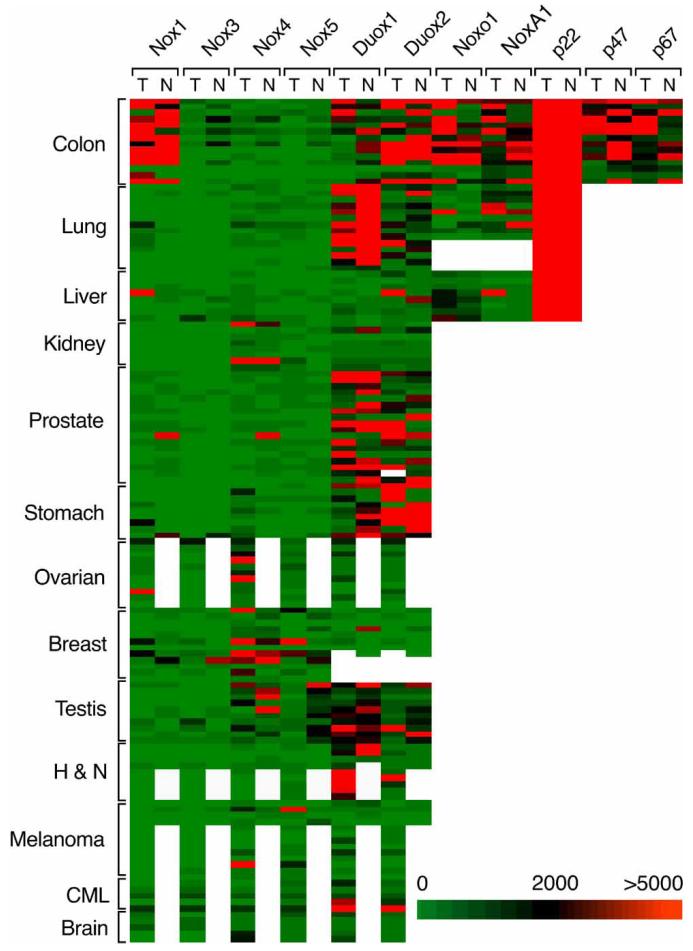Figure 1.
mRNA expression of NOX isoforms and accessory genes in human tumours and adjacent non-malignant tissues relative to 18S rRNA levels. Of 237 clinical samples from 13 different malignancies, equal numbers of tumour and adjacent non-malignant tissue specimens were obtained from 17 patients with moderately- to poorly-differentiated prostate adenocarcinoma, 14 patients with moderately- to poorly-differentiated colorectal adenocarcinoma, 14 patients with moderately- to poorly-differentiated non-small cell lung cancer, 12 patients with moderately- to poorly-differentiated infiltrating ductal carcinoma of the breast, 10 patients with moderately- to poorly-differentiated testicular carcinoma, nine patients with moderately- to poorly-differentiated gastric adenocarcinoma, eight patients with moderately- to poorly-differentiated renal cell cancer and eight patients with primary hepatocellular cancer. Equal numbers of tumour and adjacent non-malignant surgical specimens were not always available for the following cancers: malignant melanoma (13 tumours, four adjacent non-malignant skin specimens); moderately- to poorly-differentiated ovarian adenocarcinoma (12 tumours, one non-malignant ovarian tissue sample); moderately- to poorly-differentiated squamous cell carcinoma of the head and neck (nine tumours, four adjacent non-malignant tissue samples); five samples of chronic myelogenous leukaemia in relapse; and five brain tumours of glioblastoma multiforme sub-type. The data shown in the figure represent the relative mRNA expression ratios for all of the clinical samples studied; the expression ratios are grouped by disease (y-axis), and NOX family or accessory gene expression (x-axis) subdivided by tumour (T) and normal (N) surgical samples.

